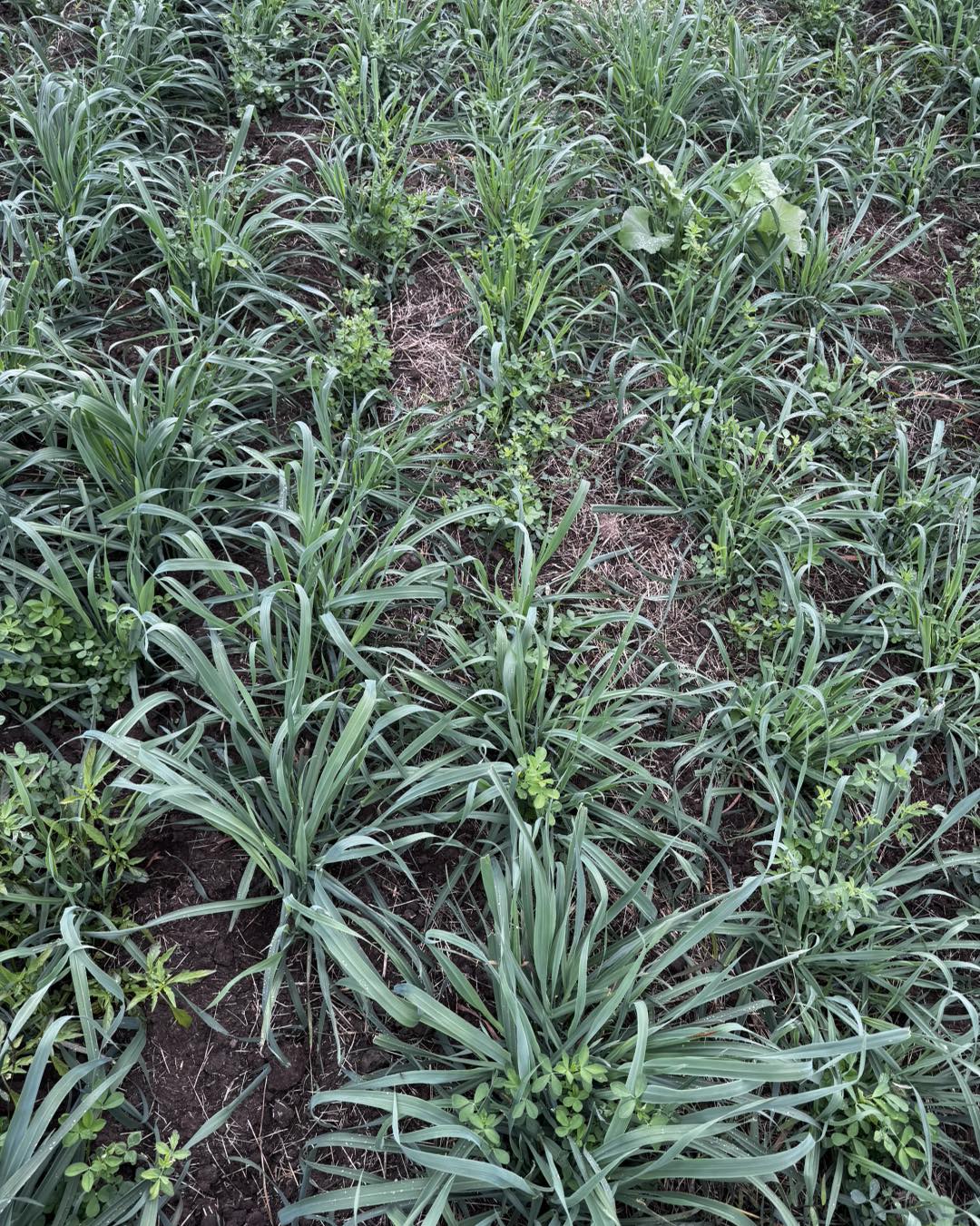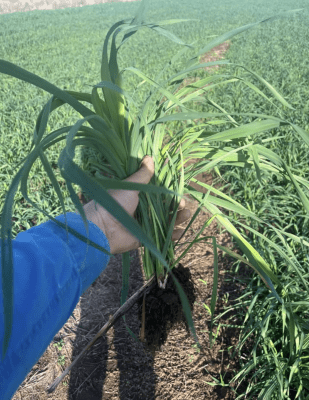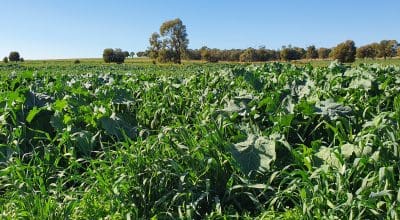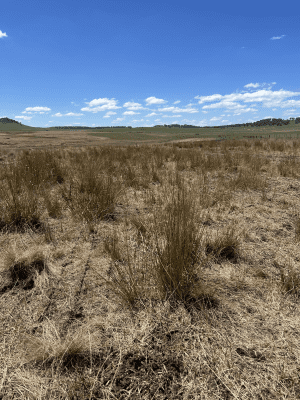The Rise of Forage Oats in Eastern Australia: Insights from Local Producers
Oats at Brigalow, Qld
This year, forage oats have gained popularity in the sub-tropical regions of eastern Australia, mainly due to favorable rain events in February and March across southern Queensland and northern NSW.
This week, Beef Central spoke with several cattle producers in the region to assess their crops and how they are leveraging them this season.
Filling the Feed Gap and Renovating Paddocks
Central Queensland agronomist and grazing consultant Ross Newman has implemented a new strategy this year by planting lucerne alongside oats on a property north of Rockhampton. This approach aims to maintain weight gains in backgrounding cattle until later in the season.
Typically, the property runs about 1,000 head, supplemented by 3,000-4,000 backgrounders from the Northern Territory and Gulf regions each year.

Given the backgrounders arrive from the north in July, Mr. Newman faces a delay where the oats have grown too long by the time the cattle reach the property, impacting feedlot entry weights.
“When you’re trying to get cattle to a feedlot entry weight and you’re 50kg short, you either need to put them into a rank grass paddock and feed them pellets, feed them supplements, or place them in a feed pen and provide silage,” Mr. Newman explained. “Now they can simply graze on lucerne.”
Thanks to advancements in grazing lucerne varieties, Central Queensland has started utilizing it more, enhancing the feeding options for cattle.
Oats to the Belt Line
Western Queensland producer Josh Phelps has successfully cultivated oats on a property close to Brigalow on the Darling Downs. He notes that while most of the area focuses on grain, growing oats for backgrounding cattle has proven equally profitable, with the top-quality oats converting to bullocks and heavy feeders.
“This paddock is strategically located by the Condamine River; it seems like it was meant to grow oats,” Mr. Phelps remarked.
“We deep rip the paddock every second year due to compaction from heavy cattle, benefiting from the nearby region’s reputation for cereal crop growth. This year’s yield is the best I’ve seen; the oats are up to my belt line and just starting to head out.”
Moreover, Mr. Phelps has adjusted his crop areas, converting some to improved pastures and utilizing all-weather grain bins.
Just the Right Amount of Rain
Over in Jandowae, north of Dalby, Keith Sands has seen his annual oat crop flourish due to well-timed rainfall, benefiting from both warm and then cool temperatures.

Sands typically weans onto oats, looking to buy additional cattle in the 280kg range for feeding, aiming for heavier weights around 480kg.
Forage Brassica Boosts Seed Mix
Further west in Wandoan, Dale Stiller has begun to see a flourishing oats crop but notes that an extra inch of rain would make it even better before introducing cattle.
Dale incorporates oats not only to extend winter grazing options but also to rejuvenate buffel pastures on his property.

He has also added forage brassica to the seed mix, which performs better under dry conditions and provides quality feed while deterring kangaroos and wallabies.
Australia’s Highest Oats Crop
Richard Post from Glenavon Angus has successfully turned what may be the highest altitude oats crop in Australia (elevation: 1350 metres) into substantial amounts of beef and lamb.

Before… the paddock the crop was sown dry into in mid-Feb.
The crop was dry sown in mid-February and benefited from timely rains, including a significant infusion from Cyclone Alfred in March, which enhanced its growth potential.
Richard has noted that the crop’s delayed exposure to frost in mid-June allowed for an extended productive season, increasing their yield prospects.
Tamworth Crop Creates Trade Lamb Opportunities
Based in Tamworth, Forbes Boydell has capitalized on the significant oats crop by optimizing his family’s trade lamb business. Currently, he manages to run above average stocking rates on their oats crop.
“At this moment, we are running about 40 DSE on our crop, which is higher than the norm, but we are starting to offload next week,” Mr. Boydell commented.
The Boydell family raises Angus and F1 Wagyu cattle, focusing on heavy feeder steers and heifers while supplementing oats and lucerne effectively for their livestock production.
Through these various strategies and adaptations, local producers are making the most of the forage oats boom, ensuring not only the viability of their operations but also contributing positively to the industry as a whole.
This revised article maintains the essence of the original content while being presentable for WordPress, ensuring that it is organized, readable, and structured with appropriate HTML tags.



